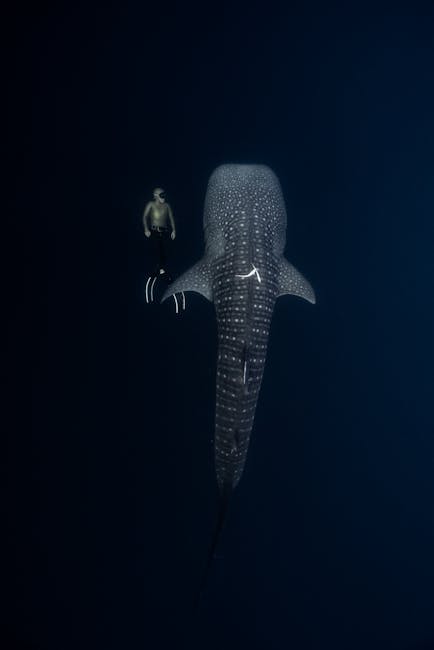Diving with Whale Sharks in Thailand: My Unforgettable Underwater Adventure

Diving with Whale Sharks in Thailand: My Unforgettable Underwater Adventure
Okay, let's be honest, diving is already pretty amazing. But diving with whale sharks? That's a whole different level of "wow." And doing it in Thailand? Forget about it! It's an experience etched in my memory forever. I'm going to share my journey, some tips, and everything you need to know to make this dream a reality for yourself. Get ready to be inspired!
My First Encounter: A Gentle Giant

I remember the day like it was yesterday. We were on a liveaboard, somewhere between the Similan Islands and Richelieu Rock, both legendary dive sites. The water was crystal clear, visibility was fantastic, and the excitement was palpable. Everyone on board was buzzing, hoping for a whale shark sighting.
We'd already had a couple of incredible dives, encountering manta rays, turtles, and an insane variety of colorful reef fish. But the captain kept reminding us: "Keep your eyes peeled! She could be anywhere!" "She" being the whale shark, of course. These magnificent creatures are usually referred to as female, even though determining the sex underwater is pretty tough!
Then, suddenly, someone shouted from the deck, "Whale shark! Whale shark!" The frenzy was instant. We all scrambled for our gear, adrenaline pumping. I felt a mix of excitement and sheer terror. I mean, these are the largest fish in the world! What if I got in the way?
I plunged into the water, the cold shock a welcome wake-up call. Following my dive guide, I swam towards a faint shadow in the distance. As I got closer, the shadow grew larger, more defined. Then, BAM! There she was. A colossal, spotted being glided effortlessly through the water.
It was breathtaking. The sheer size of her was overwhelming, yet she moved with such grace and elegance. Her spots shimmered in the sunlight, creating an almost ethereal effect. I just hung there, suspended in the blue, completely mesmerized. She passed within a few feet of me, her enormous mouth open, filtering plankton. It was a humbling and awe-inspiring moment. I felt incredibly privileged to witness such a magnificent creature in its natural habitat.
This was just one of many incredible dives I've done in Thailand searching for whale sharks. It's become a passion, and I want to help you experience it too.
Why Thailand is Perfect for Whale Shark Diving

Thailand offers some of the best opportunities to encounter whale sharks for several reasons:
- Prime Location: Thailand is situated in a region where whale sharks migrate and feed. The Andaman Sea, in particular, is known for its rich plankton blooms, attracting these gentle giants.
- Warm Waters: Whale sharks prefer warm waters, and Thailand's tropical climate provides ideal conditions year-round.
- Protected Marine Parks: Thailand has established several marine parks and reserves that help protect whale sharks and their habitat. This provides a safe haven for these creatures and ensures sustainable tourism practices.
- Excellent Dive Operators: Thailand boasts a wide range of reputable and experienced dive operators who prioritize safety and responsible interactions with marine life. They know the best spots and times to find whale sharks.
Top Dive Sites for Whale Shark Encounters in Thailand

While sightings are never guaranteed (they are wild animals, after all!), certain dive sites in Thailand are known for being whale shark hotspots. Here are a few of my favorites:
- Richelieu Rock: This is arguably the most famous whale shark dive site in Thailand. Located in the Mu Koh Surin National Park, Richelieu Rock is a submerged pinnacle teeming with marine life. The vibrant coral reefs, abundant fish, and frequent whale shark sightings make it a must-dive destination.
- Similan Islands: These islands offer a variety of dive sites with stunning coral gardens, dramatic rock formations, and diverse marine life. While whale shark sightings are less frequent than at Richelieu Rock, they do occur, especially between February and May.
- Koh Tao: This small island in the Gulf of Thailand is a popular destination for beginner divers, but it also offers opportunities to see whale sharks. Dive sites like Chumphon Pinnacle and Southwest Pinnacle are known for occasional sightings.
- Koh Lanta: Situated in the southern Andaman Sea, Koh Lanta offers excellent diving opportunities with a chance to spot whale sharks. Hin Daeng and Hin Muang are two renowned dive sites in this area.
Best Time to Go: Planning Your Whale Shark Dive Trip

While you can technically dive in Thailand year-round, the best time to increase your chances of seeing whale sharks is generally between February and May. This is when plankton blooms are most prevalent in the Andaman Sea, attracting these filter-feeding giants.
Here's a breakdown:
- February - May: Peak season for whale shark sightings in the Andaman Sea (Richelieu Rock, Similan Islands, Koh Lanta). Visibility is usually excellent during this time.
- November - January: The monsoon season has ended, and the weather is generally good for diving. While whale shark sightings are less frequent than during the peak season, they are still possible.
- June - October: This is the rainy season, and diving conditions can be unpredictable. Some dive sites may be closed due to strong currents and rough seas. Whale shark sightings are less likely during this period.
Choosing the Right Dive Operator: Safety and Sustainability First

Selecting a reputable and responsible dive operator is crucial for a safe and enjoyable whale shark diving experience. Here are some factors to consider:
- Certifications and Safety Record: Ensure the dive operator is certified by a recognized organization (e.g., PADI, SSI) and has a strong safety record. Check online reviews and ask for references.
- Experience and Knowledge: Choose an operator with experienced dive guides who are knowledgeable about whale shark behavior and the local dive sites.
- Responsible Tourism Practices: Look for operators that adhere to responsible tourism guidelines, such as avoiding physical contact with whale sharks, maintaining a safe distance, and minimizing disturbance to their natural habitat.
- Small Group Sizes: Opt for operators that limit group sizes to ensure a more intimate and less disruptive experience for both divers and whale sharks.
- Equipment Quality: Ensure the dive operator provides well-maintained and reliable diving equipment.
Responsible Diving: Respecting the Gentle Giants

It's crucial to remember that whale sharks are vulnerable creatures, and it's our responsibility to interact with them respectfully. Here are some guidelines for responsible diving:
- Maintain a Safe Distance: Keep a respectful distance from whale sharks (at least 4 meters). Avoid approaching them too closely or crowding them.
- No Touching: Never touch, chase, or ride whale sharks. This can stress them and potentially harm them.
- Avoid Flash Photography: Refrain from using flash photography, as it can disorient and disturb whale sharks.
- No Feeding: Do not attempt to feed whale sharks. This can alter their natural feeding behavior and make them dependent on humans.
- Control Your Buoyancy: Maintain good buoyancy control to avoid damaging coral reefs and disturbing the marine environment.
- Listen to Your Dive Guide: Follow the instructions of your dive guide and respect their expertise.
By following these guidelines, you can help ensure that future generations can enjoy the wonder of diving with whale sharks.
Gear Up: What to Pack for Your Whale Shark Dive Trip

Packing the right gear can make a big difference in your comfort and enjoyment on a whale shark dive trip. Here's a list of essential items:
- Dive Certification Card: Don't forget your dive certification card! You'll need it to prove your qualifications.
- Logbook: Bring your logbook to record your dives and keep track of your experiences.
- Dive Computer: A dive computer is essential for monitoring your depth, bottom time, and ascent rate.
- Wetsuit: Depending on the water temperature, you may need a 3mm or 5mm wetsuit. Check with your dive operator for recommendations.
- Mask, Snorkel, and Fins: Ensure your mask fits comfortably and your fins provide adequate propulsion.
- BCD (Buoyancy Control Device): A properly fitted BCD is crucial for maintaining neutral buoyancy.
- Regulator: A reliable regulator is essential for breathing underwater.
- Underwater Camera: Capture the amazing moments of your whale shark encounters with an underwater camera.
- Reef-Safe Sunscreen: Protect your skin from the sun with reef-safe sunscreen.
- Rash Guard: A rash guard can provide extra protection from the sun and jellyfish stings.
- Motion Sickness Medication: If you're prone to motion sickness, bring medication to prevent seasickness.
Beyond the Whale Sharks: Exploring Thailand's Underwater World

While diving with whale sharks is undoubtedly the highlight of many dive trips to Thailand, the country offers so much more to explore underwater. Here are some other incredible marine creatures you might encounter:
- Manta Rays: These graceful giants are often seen gliding through the water, especially around Richelieu Rock and the Similan Islands.
- Leopard Sharks: These beautifully patterned sharks are relatively harmless and often found resting on the seabed.
- Blacktip Reef Sharks: These active sharks are common in shallow waters and can be seen patrolling the reef.
- Turtles: Several species of turtles, including green turtles and hawksbill turtles, inhabit Thai waters.
- Moray Eels: These elusive creatures can be found hiding in crevices and coral reefs.
- Nudibranchs: These colorful sea slugs are a photographer's dream.
- Anemonefish (Nemo): These iconic fish are always a delight to see.
The vibrant coral reefs, diverse marine life, and warm waters make Thailand a paradise for divers of all levels. So, even if you don't spot a whale shark (although I truly hope you do!), you're still guaranteed an unforgettable underwater adventure.
Final Thoughts: Make Your Dream a Reality

Diving with whale sharks in Thailand is an experience that will stay with you forever. It's a chance to witness the beauty and majesty of nature, to connect with the underwater world in a profound way, and to create memories that will last a lifetime. With careful planning, responsible diving practices, and a bit of luck, you can make this dream a reality. So, start planning your trip today, and get ready for an adventure you'll never forget! I know I'll be back again soon, hoping for another magical encounter with these gentle giants.
Post a Comment